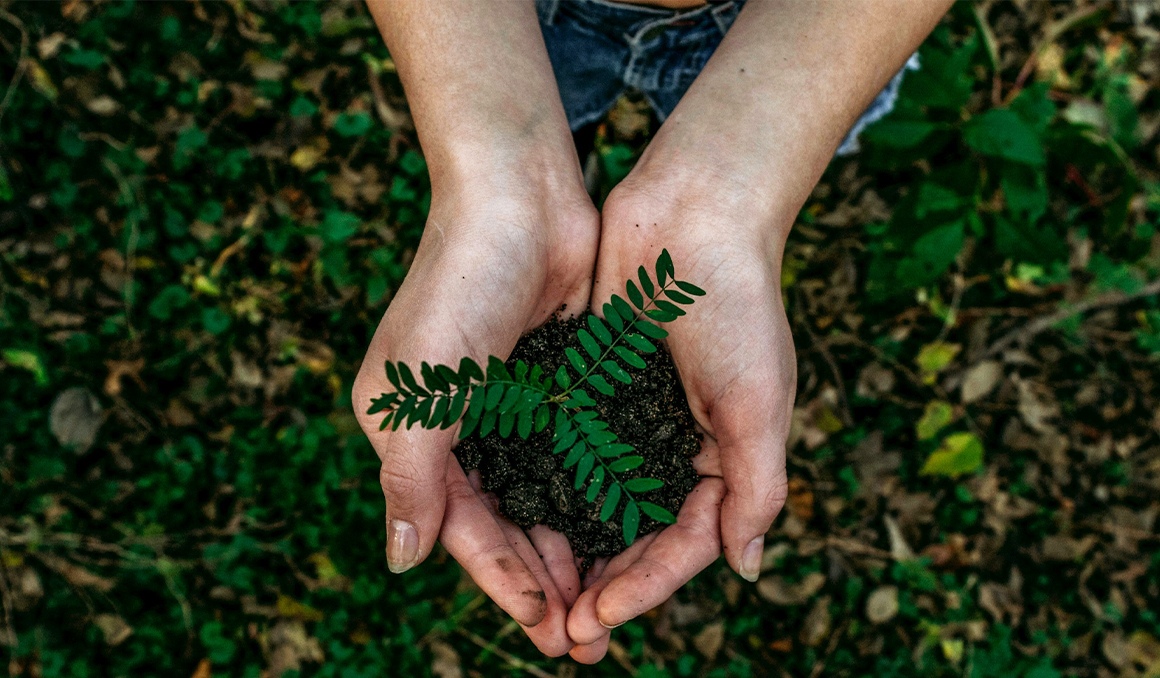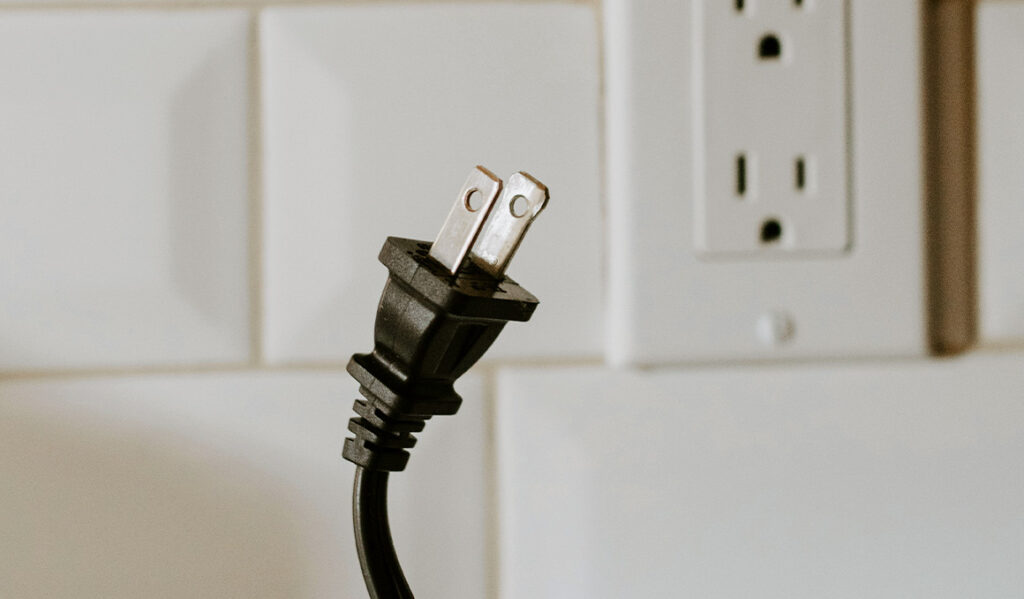Green lies debunked: Don’t fall for soggy straws!
Published on May 14, 2025

Green lies need to be debunked because environmental advice can sometimes be misleading. Said advice can range from “eco-friendly” products that aren’t so green to simple fixes that barely make a dent.
But don’t worry—we’re here to help! We, too, aim to protect our planet. In this article, we’ll explore prevalent conservation myths and reveal the truths behind them. By the end, you’ll possess actionable knowledge to make a genuine impact—no more falling for the hype!

Paper straws: Eco-friendly or just soggy?
The widely cited statistic that Americans use 500 million plastic straws daily originated from a 2011 estimate by then nine-year-old Milo Cress. He contacted three straw manufacturers and extrapolated the data, which lacks rigorous scientific backing.
While paper and bamboo straws are often promoted as better alternatives to plastic, studies have detected per- and polyfluoroalkyl substances (PFAS) in these materials. PFAS, known as “forever chemicals,” persist in the environment and have been linked to health issues such as liver damage, immune system effects, and developmental problems.
Although some PFAS can partially degrade, most remain in the environment for decades.
Regarding ocean pollution, plastic straws constitute a small fraction. National Geographic reports that plastic straws make up about 0.025% of the 8 million tons of plastic entering the ocean annually.
To make a meaningful difference, consider using reusable stainless steel straws, which are PFAS-free and fully recyclable.

Recycling: The dirty secret no one talks about
Globally, only about 9% of plastic waste is recycled.
If you’re uncertain whether an item is recyclable, it’s often better to dispose of it in the trash. Contaminated recycling can lead to entire batches being discarded.
The “Keep America Beautiful” campaign, launched in the 1950s, promoted recycling as a solution to littering. However, this initiative was funded by major beverage and packaging companies, shifting the responsibility of waste management from producers to consumers.
Recycling is a business. Items like Pringles cans, composed of mixed materials (cardboard, foil, plastic, and metal), are challenging to recycle due to the difficulty in separating components.
In the U.S., recycling regulations vary by state, leading to inconsistencies in what materials are accepted. It’s essential to familiarize yourself with your local recycling guidelines to ensure proper disposal.

Reusable bags: Doing good or just a trendy waste?
Cloth totes are popular for groceries, shopping, and daily use. However, a 2018 study by the Danish Environmental Protection Agency found that a cotton tote bag must be used approximately 7,100 times to offset its environmental impact compared to a single-use plastic bag .
To maximize their benefits, consistently use your reusable bags. Keep them in your car or by the door to remember them during shopping trips.

Biodegradable plastic: Don’t believe everything you read!
The term “biodegradable” suggests that a product will break down naturally. However, biodegradable plastics often fragment into microplastics rather than fully decomposing, contributing to environmental pollution.
These microplastics can persist in ecosystems, posing risks to wildlife and potentially entering the human food chain.
To reduce plastic pollution, opt for alternatives like glass containers, which are free of microplastics and can be reused indefinitely. Additionally, participating in local clean-up efforts can help mitigate environmental damage.

Greenwashing: How not to fall for it!
Greenwashing occurs when companies market products as environmentally friendly without substantial evidence.
For instance, Starbucks introduced strawless lids to reduce plastic waste. However, these lids contain more plastic than the previous straw-and-lid combination.
Similarly, “natural flavors” listed in ingredients are often synthesized in laboratories, despite the implication that they come directly from natural sources.
To identify genuinely eco-friendly brands, look for:
- Transparent ingredient lists with clear language.
- Third-party certifications or audits.
- Honest discussions about their environmental impact, including areas needing improvement.
Be wary of vague terms like “biobased” or packaging that appears sustainable but lacks substantiation.

Vampire electricity: The real energy drainers
Many devices consume electricity even when turned off, a phenomenon known as “vampire energy.” Items like chargers, televisions, and kitchen appliances can draw power continuously, increasing energy bills and carbon emissions .
To combat this, unplug devices when not in use or use power strips to easily disconnect multiple items simultaneously.

EVs: Are they really the green dream?
Electric vehicles (EVs) are often touted as environmentally friendly alternatives to gasoline-powered cars. However, the production of EV batteries requires mining for materials like lithium and cobalt, which can have significant environmental and ethical implications .
Moreover, the environmental benefits of EVs depend on the source of electricity used for charging. In regions where electricity is generated from coal, the carbon footprint of EVs may be comparable to traditional vehicles.
To reduce transportation-related emissions, consider using public transit, biking, or walking when possible.




I enjoyed this, when someone starts complaining that the green programs are being destroyed by Republicans I always think “ if people are that concerned maybe they should start in their own home first! You personally should respect the earth!
There are companies who make things out of plastic bags. I hope that good old US innovation can come up with something for all of this plastic packaging.
For the recycling of plastics, the problem is not lack of innovative ideas; it’s economics. Making brand-new plastics is so much cheaper than collecting old plastics, transporting them, sorting them, cleaning them, and finally making new products out of them.
Our local minimum security prison asked for plastic bags so the prisoners could knit sleeping mats for the homeless. In a very short time, they put a notice out that they now have enough plastic bags to last until the end of time.
Mind the biking! Yes, bicycles don’t have tailpipes, but the pedaling energy comes from your food calories. If your diet includes the typical American diet with red meat and dairy, the carbon footprint of your food coupled with the notoriously low energy conversion of the human body makes your biking worse than driving a small car or a hybrid car. This is proven by numbers. Try driving less by combining errands or car-pooling instead.
Non-eaten meat (including live animals) dies and decays, releasing the same amount of carbon into the atmosphere as digesting it and using it to bike does.
Don’t eat meat like cows overused for meat source. Don’t eat dairy overused for dairy source!
Don’t eat pigs, who, like other factory farmed animals, lead a tortured “life.”
Typical American diet? Red meat and Dairy? Isn’t that a human being diet? God put animals on this Earth to eat everything on this Earth we need to use to survive. Good luck with your tofu and soy
careerwise544@gmail.com Anything on earth that is green: trees, vegetable, bushes, etc require carbon dioxide to produce! And we need plants and trees to produce oxygen, so humans and animals can breath! Stop messing with Mother Earth’s plan to take care of itself!
Yes, Don’t let the little stuff distract you from the big stuff.
Make varied expansions of the following topic a recurring focus of your messaging. Doing so would be a major contribution to combating global warming.
Consumers (individuals, organizations, businesses, governments) must promptly minimize their greenhouse gas emissions to bridge the gap while we work on long-term green technology and infrastructure. Less heating and less cooling (none between 13C-30C/55F-85F, https://greenbetween.home.blog). Less driving. Less flying. Less meat-eating. Less population growth (2 children per family). Do it yourself. Tenaciously encourage others to do it. Tenaciously encourage others to tenaciously encourage others.
Embrace the message and tenaciously introduce the message “business card” to all you encounter. (You can print the business card 12 per 8.5×11 using a file from the Promote page of the website.)
Be a climate superhero – take it to the next level. Promote the message at local events. (Files for posters are available on the Promote page of the website.)
Now children are bad for the environment? That’s a new low…
Reminds me of the left-wing loon who attempted to blow up the fertility facility last week.
Yeah, that idiot Pro-Abortion Marxist DemonKKKRat Terrorist certainly Self-Aborted!!
Love it when a Plan comes together!
Your name calking excludes each other. Try getting an education.
Just about every Western nation is at their below-replacement level for children. Yes, there is a population problem–we aren’t making enough babies.
Not NOW! SCIENTISTS BEEN SAYING THIS. what is wrong with fewer humans overpopulation? Many many have children for ALL wrong reasons and children suffer. Be responsible
Less meat eating? 😂😂😂 all animals (including humans) are carnivores what exactly is not eating animals going to do for the Earth? Oh the gas from farting? well you better stop farting too because the same s*** comes out of your ass as the cow
If we give up meat, we’ll have to eat beans! That won’t help!
No not vote for this!
I don’t know where you live, but I myself live in SC, and it I cooled my house at 85 degrees F, I would be dead ( though I really think the people behind the green deal hoped that many die from it, so there are less people for them to rule over). And if I only heated my house to 55 degrees F, I wouldn’t be able to work because of the many layers of clothes it would require me to keep warm!
Plus the fact that wind, sun, and water( ask those in California, Mexico, and the like) are not constant- how many people are willing to be without power when these aren’t consistent? Oh, and to have solar power you have to mine for it – guess what? Those heavy machines can’t run on solar and the like – only desiel! Which the green deal wants to ban!
I wish the government and those pushing was really serious about helping humans first! Better to recycle all plant foods not eaten and compost it. New soil could be used to plant new community gardens, food could feed those in the community – but no, to many regulations for that! Also, a city I lived in, decided to stop recycling items because no one would take it, another city I lived in said the same thing, but since so important to citizens to recycle – the city continues to collect it, where do you think it is being stored at? My guess the city workers dump it in the regular trash!
So much more research needs to be done, before regulations are forced on humans! And let us not forget to take care of each other first!
But you’re missing the sad truth that these nut jobs like Don Parda DONT CARE ABOUT HUMANS. They WANT you to die in SC’s heat… 🙁
Please do the planet a favor and show us what you mean, Mr. Parda!
Evangelize, embrace the message,
“Promote the message” religiously, do!
YOU stop flying in planes,
stop driving,
stop biking,
stop walking,
stop exercising and panting out all that carbon dioxide,
stop eating food being grown and requiring energy for harvest, packaging and transportation,
stop buying,
stop living in a house that uses up heat, electricity and energy, stop breathing out carbon dioxide,
Do sterilize your own kids.
Cremate yourself NOW while you can, to save others the energy of having to do it for you
Don’t have pets!!!
NO DOGS OR CATS FOR YOU!!!
THINK: the best 1 word answer. Individually, apply it to helping the environment. Examples: 1) For 3-minute showers: Wash your face, neck and ears in the sink first. 2) Saving while shaving: microwave a big cup of water, then use it to clean the razor during your entire shave.
Please share other tips in this blog. Thank you!
My daughter’s family and I have been on a crusade not to buy anything plastic or in plastic. Do you know how difficult it is to buy quality products not in plastic containers? We used to love Teddy’s Natural Peanut Butter. It was wonderful, tasted great and came in a glass jar. Then they switched to plastic jars. We no longer buy it. So sad.
Then there’s household products like laundry detergent, etc.. They’ve come up with “sheets” – but there are plastic residuals in the “sheets’ that ruin the water supply.
Still better than jug after jug…
I always found it interesting how those pushing electric vehicles for dubious environmental reasons ignore the very real environmental destruction caused by air travel. Vast populations of birds have been and are being destroyed annually near airfields to facilitate air travel.
I grew up in the 50’s when plastic was not so common. Food was either sold in a glass container or tin. Empty containers were put to use for other things. There was very little waste as most folks couldn’t afford to buy like we can today. Our wealth and technology has made us comfortable and independent of God. Now our hearts have closed and we have become selfish.
Agree. I did not grow up in the 50s, but all of these complicated, yet ineffective ways to “help” the environment would be better helped by living as simple as possible. Isn’t that the gospel message? Unfortunately, our modern society with all of its materialistic ideals and the push for consumerism create the very environmental problems that we are trying to solve! If we lived more simply, would there really be a need to figure out what kind of straw to use??? How about eliminating most unhealthy processed food… like those awful pringles? That would not only help the environment but it would help our health too! Two for one bonus! We have gotten ourselves into this mess because of the changes in our lifestyles. The food companies capitalized on our want for convenience and fast meals… now it is not just a need for convenience, on occasion, but due to our fast paced society, convenience is now key! No one has time for making their own coffee (goodbye Starbucks) let alone have time to do some home cooking. I say keep your life simple, love God, and have lots of children.
Agree re glass, tin, etc.. economics cheaper use plastic. Food tastes better, drinks too. Be less cancer. I believe. Don’t buy plastic much at all. I’m trying!
I have read multiple studies that reusable bags have a lot of mold. Also that they are forgotten on most shopping trips.
I heard that when California quit using plastic grocery store bags, that food poisoning cases went up by 50%. People would put raw meat in the reusable bag in one shopping trip, then in the next trip, they put food in them, like lettuce, that wouldn’t be cooked. The raw meat left bacteria in the bag that the next food picked up.
That would be a common sense issue! Don’t ever do that. Ee have become society led around by noses by corporate world. Think folks simple think. Be creative, imagine, …
You forgot to include windmills.
Enjoyed the read, I would appreciate the references to your bullet points in the event I wanted to dig down further or if I’m having a discussion with someone who doesn’t believe me, the references can help with the discussion. Thank you
Bottled water is a HUGE part of the problem. Since when does drinking from the tap become akin to drinking water out of a gutter. How many of us Boomers were raised on tap water and drank out of a garden hose? Yet somehow it is safer to sleep with a whore in AOC’s district than drink out of a tap. Don’t need bottled water. Use the drinking fountain
Sleep with… wow hate much?! Lot cities, like mine water is unhealthy to drink. Bottled water big business again, use sense filter water, reuse bottles no single serves, at all! Recycle
About time a logical and honest article is written. The green deal is bull!
The 7,100 number. How many times do you need to use the plastic bag?
I don’t like to use any kind of straw ,or plastic lid .